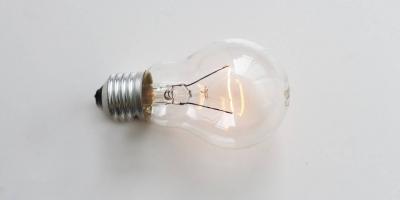One of the most common household electrical problems is light flickering.
An occasional light flicker is normal and it’s usually harmless. Sometimes, it is brought by household voltage fluctuation, insufficient or interrupted power supply, etc.
However, the real problem comes when it starts to dim and then gets brighter. If the natural occurrence happens regularly, the situation should be addressed right away. Chances are that the neutral connection in the panel is loose or the transformer’s service cable is corroded.
Some light flickering problems are manageable and easy to fix. But, before we come up to a conclusion and solve it by ourselves, there are certain things we should consider prior to calling for experts. Let’s explore the possible reasons and understand the specific causes of why your lights are flickering.

Light Bulb Type
Flickering may be related to the following:
- When your light starts to flicker, check your bulb to see if it is screwed in tightly. Over time, aging bulbs lose their connection with the socket.
- There’s a certain bulb that flickers naturally even if there’s no issue with the wiring.
- Fluorescent lights are more prone to flickering as they power up or if it’s in cold temperatures when the phosphor tries to reach the maximum level of illumination.
- LED light flickers are commonly related to its dimmer switches. Dimmers are created to handle higher electrical loads and it doesn’t go well with lower-voltage LEDs.
Occasional flickering is not a cause for concern. If the flickering happens on a daily basis, try to replace the bulb to correct it. However, if the flickering still occurs, it is best to replace the entire fixture.
Dimmer Switch
Most dimmer switches don’t go well with non-dimmable CFL and fluorescent light bulbs. And this is a common source for LED light flickering. Older and newer conventional dimmers are designed for standard incandescent light bulbs. To avoid episodes of flickering, always check if the light bulb is compatible with your switch:
- Use a good-quality dimmable LED bulb.
- Replace your old dimmer with a new and better dimmer designed for LED bulbs
Switch Issues
One of the most common culprits for flickering episodes is the poor connection of the light switch itself. First, check if your light switch is attached tightly and correctly with the light bulb. Gently wiggle the light switch and if it does flicker, finally, you’ve found the problem. But, if this simple trick won’t do, let’s see if these steps will help us find the culprit.
How will you know if your light switch is the source of flickering? Here’s some quick fix:
- Turn off the light switch for about half an hour, then turn it back on.
- If flickering still occurs, try flicking the switch on and off a couple of times
- If steps 1 and 2 failed, then it is either of these two issues:
- The light switch is not the problem, maybe a more serious underlying issue
- Replace the entire light switch
Loose Connections
A poor or loose connection of power supply to your appliances is mainly the chief cause for light flickering. Simple troubleshooting can get this issue fixed right away. Always check your cords if it is plugged tightly or you can try wiggling on and off the fixture’s switch. If it causes your light or other appliances to flicker, then a simple wiring job will fix it.
Insufficient Power Supply
A large draw of electrical current will cause lights to dim to your sensitive electronics and household appliances. If the lights dim briefly it means that the electrical circuit is overloaded. You might find a simple solution or quick fix, but the fact still remains that your power supply is not enough to provide illumination to your entire household.
Gordon Powers’ accommodating and friendly staff are available 24/7 for a consultation to correct this problem right away.
How to Avoid Light Flickering
If the flickering is not related to loose wirings, loose bulb connections or faulty light switches. Then, it is time to consider and avail one of these two types of electrical security.
Power Surge protector
A power surge is one of the most common occurrences that cause light flickering. It is generated by a powerful or sudden surge of electricity to your appliances and other sensitive electronics i.e television, gaming system, the computer which produces a strain to your power supply. To protect your appliances from a sudden power surge, have a surge protector installed or a plug-in.
Don’t attempt to do the installation yourself. Hence, you are licensed to do so. For convenient and affordable installation, call Gordon Powers licensed electrician to do the job for you.
Uninterruptible Power Supply (UPS)
Most of your sensitive electronics and other household appliances are not designed to be turned off suddenly. If a power interruption happens without prior notice, they are likely to be corrupted and damaged. Rather going to a long process of turning off your power supply, an Uninterruptible Power Supply (UPS) gives your electronics and household appliances half an hour or depending on the quality of the UPS to gradually shut off properly. UPS is helpful during blackouts as well.
Gordon Powers is your light flickering solution
Normally, light flickering should not cause an alarm. But, if you notice that is an unusual occurrence, then it’s time for you to call for a solution. Sometimes, there are electrical issues that indicate a more serious underlying issue that needs to be addressed right away.
If our quick fix won’t solve the light flickering problems, let Gordon Powers’ skilled electricians do the job for you. Simply book in your appointment, leave your details and our friendly staff will get back to you instantly.
Call us anytime today at (02) 9199 7480 for a fast solution to your electrical problems. Our qualified level 2 electricians and emergency electricians are available 24 hours a day.










